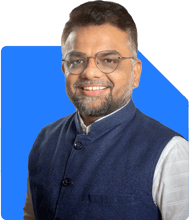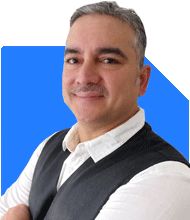Vivek Shah | Answer |Ask -Follow
Financial Planner - Answered on Jun 19, 2023
Shah founded Finrise, a financial planning and wealth management firm, in 2011. He believes that equity investment is the only way to generate long term wealth.
He has an MBA in finance, a degree in chartered accountancy and is a registered life planner from Kinder Institute of Life Planning, USA.... more

Sir, Can i Buy iex at This Level ?
Indian Energy Exchange is one of two exchanges in India that offer an electronic platform for the trading of electricity products and has a substantial majority market share among the power exchanges in India. The DAM constitutes the substantial majority of the energy contracts that are traded on the Exchange. The Exchange is an online platform which is accessible to registered participants throughout India. The Exchange increases the accessibility and transparency of the power market in India and enhances the speed and efficiency of trade execution. In addition to trade execution, the exchange offers settlement services, including electronic trade confirmation, access to clearing services and risk management functionality.
Indian Energy Exchange Limited was incorporated as a public limited company on March 26, 2007 in Maharashtra. The Company obtained a certificate of commencement of business on April 17, 2007.
In 2009, trading on its exchange commenced in day-ahead-market (DAM).
In 2010, the company registered first industrial consumer on its exchange. During the year under review, trading on its exchange commenced in term-ahead- market (TAM). During the year under review, the average monthly cleared volume on its exchange crossed 500 million units (MU). In 2011, trading on its exchange commenced in renewable energy certificates (RECs).
In 2014, the daily average cleared volume on its exchange touched 79 MU/day and highest cleared volume in a day crossed over 117 MUs. In 2015, highest cleared volume in a day on its exchange crossed over 131 MUs.
In 2016, daily average cleared volume on its exchange touched 93 MU/day and highest cleared volume in a day crossed over 136 MUs. In August 2016, the Exchange received three ISO Certifications: ISO 9001:2008 for quality management, ISO 27001:2013 for information security management and ISO 14001:2004 for environment management.
In 2017, daily average cleared volume on its exchange touched 109 MU/day and highest cleared volume in a day crossed over 147 MUs. Trading of energy saving certificates (ESCerts) on its exchange commenced on 26 September 2017.
The company came out with an initial public offer (IPO) during the period from 9 October 2017 to 11October 2017. The IPO comprised of offer for sale of 60.65 lakh shares by selling shareholders. There was no fresh issue of shares from the company. The stock debuted at Rs 1,500 on BSE on 23 October 2017, a discount of 9.09% compared to the IPO price of Rs 1,650 per share.
On 28 March 2018, Indian Energy Exchange (IEX) and Japan Electric Power Exchange (JEPX) signed a Memorandum of Understanding (MoU) for jointly exploring the opportunities of cooperation in electricity market. The intent of the MoU is to share experience and cooperate with each other in respect of technology and in energy market products development. The scope of MoU includes opportunities for training to augment the electricity trading through competitive market platforms by organizing knowledge sharing programs.
The Board of Directors of Indian Energy Exchange Limited (IEX) at its meeting held on 26 April 2018, decided not to go ahead with the buyback of Equity Shares of the company.
The Board of Directors of Indian Energy Exchange Limited (IEX) at its meeting held on 9 August 2018 recommended Sub-Division of 1 (one) Equity Share of face value of Rs. 10/- (ten) each fully paid up into 1 (one) Equity Shares of Rs. 1/- (one) each fully paid up, resulting in issuance 10 (ten) Equity Shares of Rs. 1/- (one) each fully paid up, thereby keeping the paid up capital intact, subject to the approval of the Members in the ensuing 12th Annual General Meeting. Additionally, the Board approved increase in limit of total shareholding of all Registered Foreign Portfolio Investors (FPIs)/Registered Foreign Institutional Investors (FIIs) put together from 24% up to 49% (which is present sectorial cap under existing FDI Policy) of the paid-up equity share capital of the company, which shall be subject to approval of shareholders in the ensuing Annual General Meeting and other regulatory approvals/limitations.
On 29 September 2018, the highest volume traded on its exchange in Day-Ahead Market (DAM) touched 306 MU. This is all time high record volume.
During the year 2019, the Company initiated the Buyback proposal for buy-back of up to 3,729,729 fully paid-up equity shares of Rs. 1/- each of the Company (representing 1.23% of the total number of equity shares in the paid-up share capital of the Company) at a maximum price of Rs. 185/- per equity share on a proportionate basis through tender offer for an aggregate amount of Rs. 690,000,000/- (excluding transaction costs viz. brokerage, securities transaction tax, service tax, stamp duty, etc.). The Record Date for determining the eligibility of the shareholders to participate in the Buyback was set as February 15, 2019. The Company completed the Buyback on April 11, 2019 that is within 12 months from the date of Special Resolution passed for approving the proposed buy back which is January 28, 2020.
In FY19, India achieved an installed power capacity of 356 GW and generation of about 1371 billion units with diverse generation mix comprising coal, gas, hydro, renewable and nuclear energy. During the year 2019-20, Company incorporated a wholly-owned subsidiary Company,"M/s Indian Gas Exchange Limited (IGX) on November 6, 2019. The Company started the Indian Gas Exchange in FY 2020. The Real-Time market was launched on 01 June 2020. The Green Term-Ahead Market commenced trading in August 2020 while the Green Day-Ahead Market commenced in October 2021. It signed a Memorandum of Understanding (MOU) with Power Ledger, an Australian company for peer to peer trading in India.
In FY 2021, Company launched Real Time Market which requires very high technological expertise. It helped market participants dynamically balance their power demand-supply portfolio real time in a structured way through the market platform. It upgraded the systems allowing this market to operate with nearly 100% availability. It introduced a Mixed-Integer Linear Programming (MILP) based trading algorithm, which makes it easy to introduce complex bids on the Exchange platform to meet the requirements of a changing market scenario. On April 19, 2021, it commenced Cross-border Electricity Trade with Nepal, Bangladesh, and Bhutan to build a regional power market.
In FY 2022, IGX, which was the subsidiary of IEX (the Company) became an associate of the Company on account of divestment of 4.93% stake in IGX to Indian Oil Corporation Limited, effective from 17 January 2022. It launched Hydro-power contracts in Green Term-Ahead market segment in FY 2022. It commenced the trading platform for PAT Cycle- II in financial year 2022.
In FY24, the government has set a coal production target of 1 Bn Tonnes (BT), representing a notable 12% growth compared to FY23. Simultaneously, there has been a decline in imported coal prices, which is expected to reduce eauction coal prices. Consequently, the increased availability of coal at a more affordable rate will result in a decline in clearing prices, thereby facilitating higher trading volumes on the exchange.
In order to adapt to the dynamic needs of consumers, IEX has consistently demonstrated its dedication to broadening its range of offerings. In FY23, the Company introduced several new products to cater to evolving demands. Notable additions include the High-Price Day-Ahead Market (HP DAM), which aims to increase spot market capacity during periods of high demand. Additionally, IEX launched Term-Ahead Market (TAM) contracts up to 90 days, as well as introduced Green Monthly and Green Hydro contracts to promote
environment-friendly energy. Furthermore, IEX has plans to inaugurate an Ancillary market, set to commence operations on the 1st of June.
Looking beyond current headwinds, we expect FY24E to be better as the decrease in clearing prices will lead to higher volumes, and new product launches to yield returns. Therefore, based on our revised estimates, we
maintain a BUY on IEX Ltd with a target price of Rs. 186.
Disclaimer: Information shared is only for Education purpose and not an investment advise. Kindly contact your advisor for comprehensive advise.
You may like to see similar questions and answers below
Nikunj Saraf | Answer |Ask -Follow
Mutual Funds Expert - Answered on Feb 16, 2023
Samraat Jadhav |2522 Answers |Ask -Follow
Stock Market Expert - Answered on Jan 31, 2024
Advait Arora | Answer |Ask -Follow
Financial Planner - Answered on Aug 07, 2023
Advait Arora | Answer |Ask -Follow
Financial Planner - Answered on Jul 18, 2023
Nayagam P P |10860 Answers |Ask -Follow
Career Counsellor - Answered on Jul 08, 2025
Reetika Sharma |440 Answers |Ask -Follow
Financial Planner, MF and Insurance Expert - Answered on Dec 24, 2025
Reetika Sharma |440 Answers |Ask -Follow
Financial Planner, MF and Insurance Expert - Answered on Dec 24, 2025
Reetika Sharma |440 Answers |Ask -Follow
Financial Planner, MF and Insurance Expert - Answered on Dec 24, 2025
Reetika Sharma |440 Answers |Ask -Follow
Financial Planner, MF and Insurance Expert - Answered on Dec 24, 2025
Ramalingam Kalirajan |10925 Answers |Ask -Follow
Mutual Funds, Financial Planning Expert - Answered on Dec 24, 2025
Mayank Chandel |2583 Answers |Ask -Follow
IIT-JEE, NEET-UG, SAT, CLAT, CA, CS Exam Expert - Answered on Dec 24, 2025
Mayank Chandel |2583 Answers |Ask -Follow
IIT-JEE, NEET-UG, SAT, CLAT, CA, CS Exam Expert - Answered on Dec 24, 2025
Mayank Chandel |2583 Answers |Ask -Follow
IIT-JEE, NEET-UG, SAT, CLAT, CA, CS Exam Expert - Answered on Dec 24, 2025
Dr Dipankar Dutta |1842 Answers |Ask -Follow
Tech Careers and Skill Development Expert - Answered on Dec 23, 2025
Mayank Chandel |2583 Answers |Ask -Follow
IIT-JEE, NEET-UG, SAT, CLAT, CA, CS Exam Expert - Answered on Dec 23, 2025



















.jpg)











